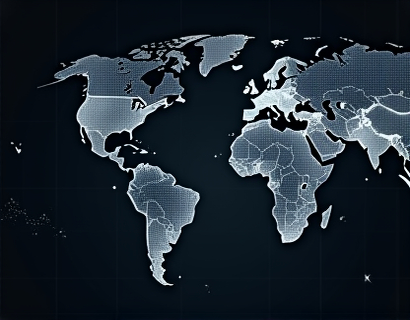Unlock Business Growth with Cutting-Edge Tech: Tailored Solutions for Efficiency and Sustainable Success
In today's rapidly evolving market, businesses must leverage innovative technology solutions to stay ahead of the competition. The integration of cutting-edge technology is not just a luxury but a necessity for enhancing efficiency, driving groundbreaking innovation, and ensuring sustainable growth. This article delves into the transformative power of advanced tech solutions tailored to meet the unique needs of businesses, providing a roadmap to unlock their full potential.
The first step in harnessing the power of technology is to conduct a thorough assessment of your current operations. Understanding where inefficiencies lie and identifying areas ripe for innovation is crucial. This involves analyzing workflows, processes, and systems to pinpoint bottlenecks and opportunities for improvement. By doing so, businesses can tailor technology solutions that directly address their specific challenges and goals.
One of the most impactful areas where technology can drive efficiency is in automating repetitive and time-consuming tasks. Robotic Process Automation (RPA) is a prime example of a technology that can significantly reduce manual labor and errors. By automating routine tasks such as data entry, invoice processing, and customer service responses, businesses can free up valuable human resources to focus on higher-value activities. This not only speeds up operations but also minimizes the risk of human error, leading to higher accuracy and reliability.
Another critical aspect of efficiency is data management. With the exponential growth of data, businesses need robust solutions to store, process, and analyze this information effectively. Advanced data analytics platforms equipped with artificial intelligence (AI) and machine learning (ML) capabilities can transform raw data into actionable insights. These insights can inform strategic decisions, optimize resource allocation, and enhance customer experiences. For instance, predictive analytics can forecast market trends and consumer behavior, enabling businesses to proactively adjust their strategies.
In addition to automating tasks and optimizing data management, technology can also revolutionize communication and collaboration within organizations. Cloud-based collaboration tools such as Microsoft Teams, Slack, and Google Workspace have become indispensable in fostering seamless communication among team members, regardless of their physical location. These tools facilitate real-time collaboration, document sharing, and project management, breaking down silos and enhancing team productivity. For remote and hybrid work environments, these solutions are particularly vital in maintaining a cohesive and efficient work culture.
Innovation is another cornerstone of sustainable business growth, and technology plays a pivotal role in fostering a culture of innovation. Digital platforms and tools can empower employees to experiment, prototype, and iterate quickly. For example, design thinking tools and agile project management software help teams adopt an iterative approach to problem-solving, encouraging creativity and continuous improvement. Moreover, technology can facilitate knowledge sharing and learning, ensuring that the entire organization benefits from new ideas and best practices.
Sustainability is increasingly becoming a key factor in business success, and technology offers numerous solutions to support environmentally friendly practices. Energy management systems, for instance, can monitor and optimize energy consumption in real-time, reducing waste and lowering costs. Smart building technologies integrate various systems such as lighting, heating, and ventilation to create more efficient and comfortable work environments. Additionally, supply chain management software can help businesses track and reduce their carbon footprint by optimizing logistics and sourcing practices.
Customer experience is another area where technology can drive significant improvements. Personalization is key in today's market, and advanced analytics combined with AI can help businesses deliver tailored experiences to their customers. Recommendation engines, for example, analyze customer data to suggest products or services that align with their preferences and behaviors. This not only enhances customer satisfaction but also increases sales and loyalty. Furthermore, chatbots and virtual assistants powered by natural language processing (NLP) can provide 24/7 customer support, addressing queries and issues promptly and efficiently.
The integration of Internet of Things (IoT) devices is another transformative trend that businesses can leverage. IoT enables the connection and communication of physical devices and sensors, creating a network of interconnected systems. In manufacturing, IoT can monitor equipment performance and predict maintenance needs, reducing downtime and maintenance costs. In retail, smart shelves and inventory management systems can track stock levels in real-time, ensuring optimal stock availability and reducing waste. These applications of IoT not only improve operational efficiency but also enhance the overall customer experience.
Cybersecurity is a critical concern in the digital age, and businesses must invest in robust security solutions to protect their assets and data. Advanced security technologies such as artificial intelligence and machine learning can detect and respond to threats in real-time, providing a proactive defense against cyber attacks. Implementing a comprehensive security framework that includes regular audits, employee training, and up-to-date security protocols is essential to safeguard sensitive information and maintain customer trust.
To fully realize the benefits of these cutting-edge technologies, businesses need to adopt a strategic approach to implementation. This involves setting clear goals and objectives, selecting the right technology partners, and ensuring that employees are trained and equipped to utilize new tools effectively. Change management is also crucial, as adopting new technologies often requires a shift in organizational culture and processes. Leadership must communicate the vision and benefits of these changes to gain employee buy-in and drive successful adoption.
In conclusion, the integration of advanced technology solutions is not just an option but a necessity for businesses aiming to thrive in today's competitive landscape. By enhancing efficiency, driving innovation, and supporting sustainable growth, these technologies provide a competitive edge that can propel businesses to new heights. Embracing cutting-edge tech is not just about keeping up with the times; it's about leading the way and unlocking unprecedented potential.











































